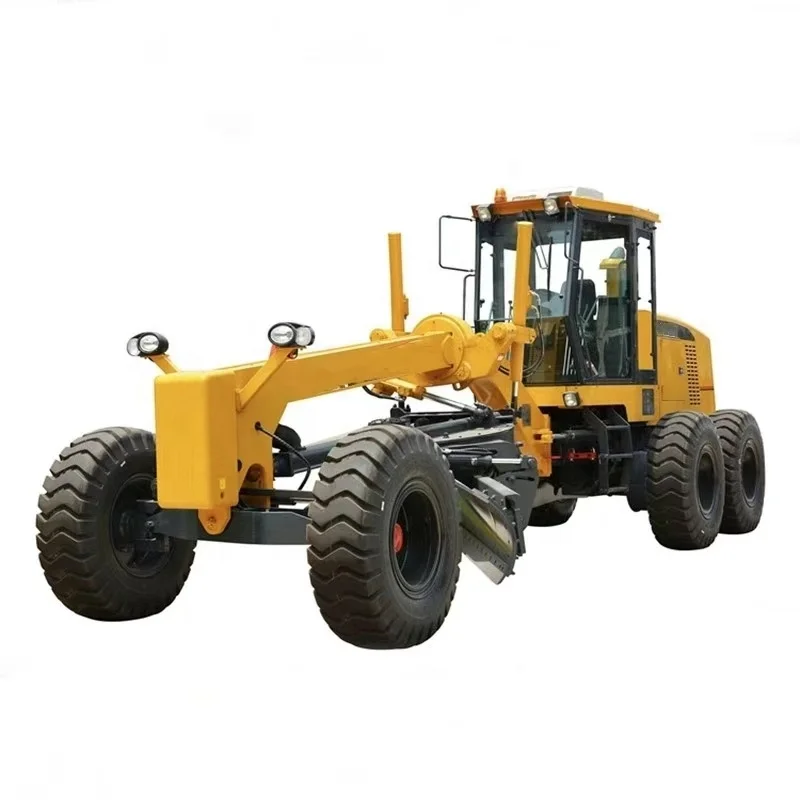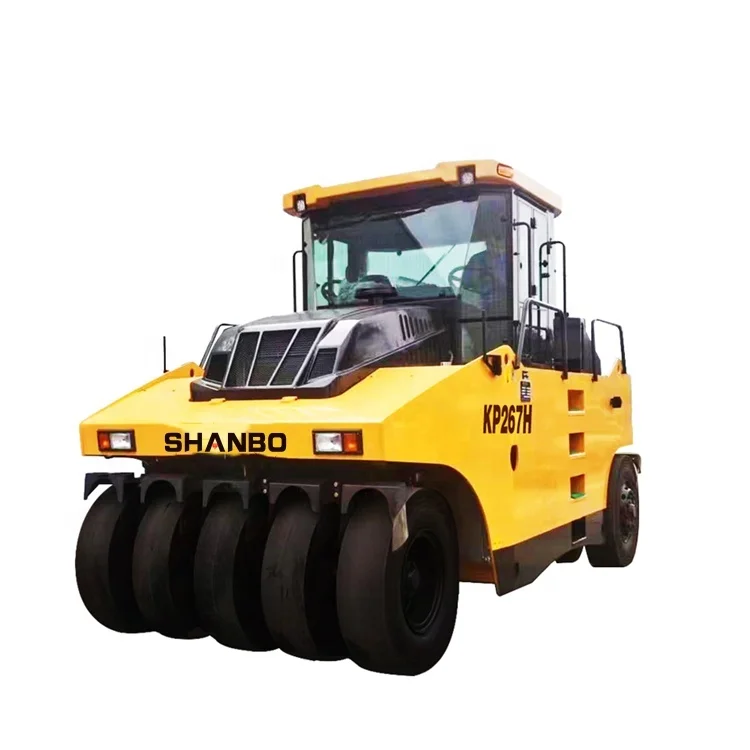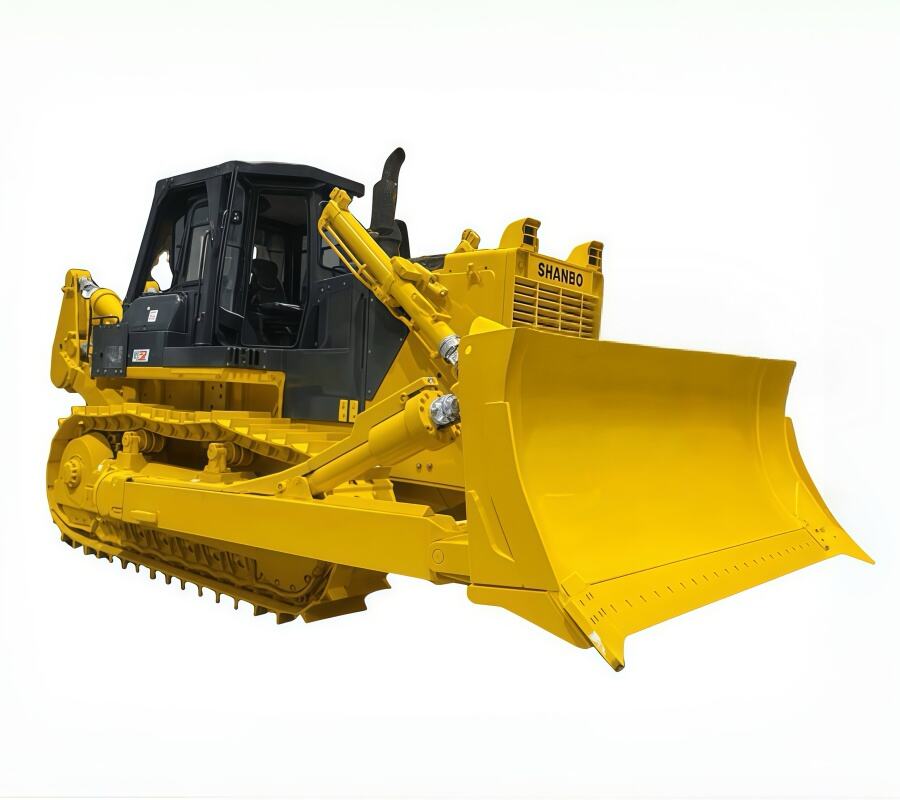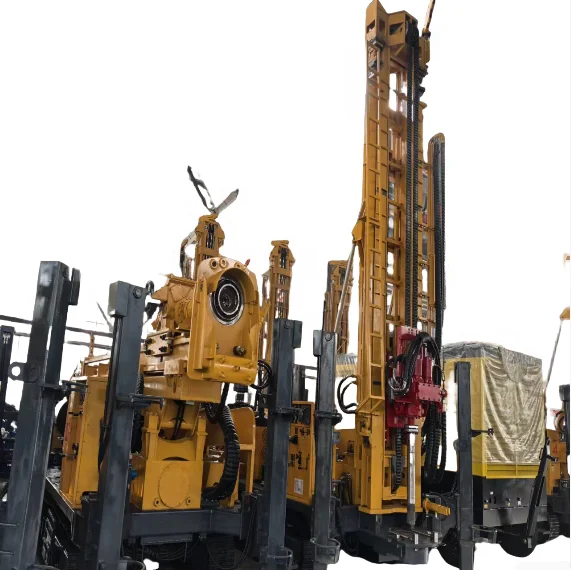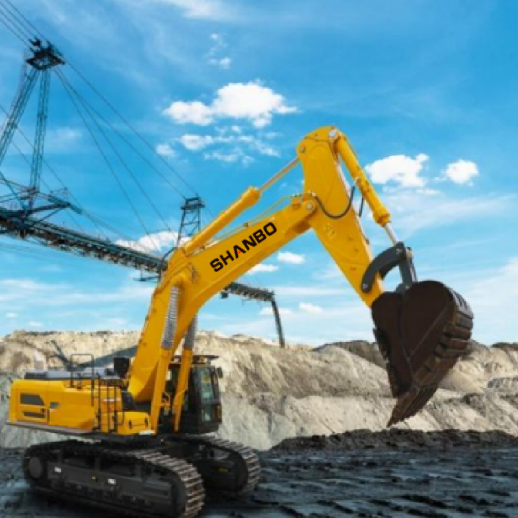Comparing Bulldozer Prices Across Different Brands
Key Factors Influencing Bulldozer Prices
Engine Power and Performance Specifications
The engine power of a bulldozer, measured in horsepower, is a key determinant of its price. Bulldozers with more powerful engines tend to command higher prices due to the advanced engineering required to support such performance. For instance, a bulldozer with 300 horsepower or more, which is suitable for mining or extensive civil engineering projects, can cost well over a million dollars. The increased cost is justified by the enhanced capabilities, such as improved torque and blade capacity, which are crucial for demanding tasks. Additionally, the type of fuel used can also influence the cost; for example, machines using eco-friendly fuels may be priced higher due to the cost of developing sustainable technology.
Furthermore, specific performance specifications such as torque and blade capacity also affect bulldozer pricing, with modern features and upgrades generally leading to a premium. Industry data shows that opting for high-performance engines typically results in substantial price increases. On average, the price can increase significantly when upgrading engine specifications, showcasing a direct correlation between enhanced engine attributes and cost increments in both new and used dozers.
Size Classifications: Small vs Medium vs Large Dozers
The size classification of a bulldozer significantly impacts its pricing. Bulldozers fall into three primary size categories: small, medium, and large, with each size serving specific applications and influencing market demand. Smaller bulldozers, with less than 75 horsepower, are most cost-effective and ideal for residential projects due to their maneuverability. On average, new small bulldozers cost under $100,000, making them accessible for small-scale tasks.
Medium bulldozers, offering between 100 to 300 horsepower, are commonly used in commercial construction and balance power and maneuverability. These machines start at around $100,000, with prices escalating to over a million depending on technology integrations and power capabilities. Large bulldozers, which often exceed 350 horsepower, are designed for industrial and complex engineering tasks. Market research highlights that these tend to start at $1 million and can exceed $2 million. Data underscores that as the size of a bulldozer increases, so does its power, versatility, and, subsequently, its price.
Brand Reputation and Market Positioning
Brand reputation plays a pivotal role in determining bulldozer prices. Esteemed brands often charge premium prices due to their recognized quality, reliability, and longevity of products. For instance, leading brands like Shanbo have established a strong market perception, allowing them to set higher price points. Real-world examples reveal that customers are willing to pay extra for bulldozers from reputable brands, assured of their investment's durability and efficient performance.
Market positioning also influences pricing strategies. For instance, brands positioned as luxury or high-tech providers employ strategies that emphasize superior technology and extensive after-sales support, attracting clients willing to invest more. According to industry surveys, buyers often associate high brand reputation with quality assurance and reduced maintenance needs, prompting decisions in favor of recognized brand equipment despite steeper costs.
Advanced Technology Integration Costs
The integration of advanced technologies in bulldozers, such as GPS, automated controls, and telematics, significantly impacts their pricing structures. These innovations lead to higher upfront costs but promise long-term benefits by enhancing operational efficiency and reducing downtime. For instance, high-performance bulldozers equipped with GPS and automated features can perform tasks with precision, saving labor costs and time, making them attractive despite the increased initial expense.
Case studies in the construction industry highlight that bulldozers with state-of-the-art technologies see improved productivity, which offsets the initial expenditure over time. Expert testimonials often emphasize that these technologies are not mere luxuries but vital investments fostering efficiency and operational effectiveness. As the industry progressively gravitates towards smarter and more efficient machinery, the demand and price of technologically advanced bulldozers are anticipated to grow.
Bulldozer Price Ranges Across Top Brands
Shanbo: Premium Pricing for Industry Leadership
Shanbo bulldozers for sale stand out in the industry with their premium pricing strategy, a reflection of their exceptional quality and leadership in the field. Known for their advanced engineering and durable construction, Shanbo models are often favored by those who value reliability and top-tier performance. Typically, Shanbo's dozer for sale range from $200,000 for smaller variants to well over a million dollars for high-capacity units designed for industrial applications. Customers frequently praise Shanbo for its robust design and long service life, which justifies the higher cost compared to other brands.
Komatsu: Competitive Rates for Heavy-Duty Applications
Komatsu bulldozers for sale are recognized for providing competitive rates while catering to heavy-duty applications, making them a preferred option for construction companies that prioritize durability and reliability. The brand's pricing strategy aligns with its reputation for offering machines that excel in tough environments without compromising performance quality. Prices typically start at around $100,000 for their basic models and can exceed half a million dollars for advanced models equipped for demanding tasks. Market reports consistently show Komatsu's strong market share, indicating widespread adoption due to their robust pricing and reliable performance measures.
John Deere: Mid-Range Options with Agricultural Focus
John Deere bulldozers for sale have carved a niche for themselves with mid-range pricing options specifically designed to meet agricultural needs. Their machines often range from $150,000 to $400,000, providing features such as adaptability to various agronomic tasks and user-friendly controls that appeal to farmers and agricultural enterprises. John Deere’s emphasis on agriculture ensures their models stand out, with sales trend data indicating a consistent rise in adoption among farming communities. This focus has shaped their pricing model, providing affordable yet efficient solutions for agricultural applications.
Liebherr: Specialized Models for Mining Operations
Liebherr bulldozers for sale excel in providing specialized models tailored for mining operations, where rugged terrain and heavy workloads are the norm. Their pricing strategy accommodates the unique requirements of these environments, with costs starting from $250,000 for basic models designed for mining tasks and scaling up to over a million dollars for units that offer maximum productivity in demanding conditions. Industry reports consistently highlight Liebherr's stature and influence within the mining sector, attributing their success to innovative solutions and strategic pricing designed for optimum performance in specialized applications.
New vs Used Bulldozer Cost Analysis
Depreciation Rates for Brand New Bulldozers
Depreciation is a crucial factor to consider when comparing the costs of new and used bulldozers. Brand new bulldozers experience significant depreciation in their initial years, which can greatly affect their resale value. According to industry statistics, bulldozers typically depreciate by 20% in the first year and then by 10% annually over the next few years. This depreciation rate implies that the total cost of ownership can be significantly higher for new models, making it a vital consideration for businesses. From an economic standpoint, understanding these depreciation trends is essential for companies aiming to maximize their investment. Experts often highlight that the long-term cost analysis should weigh the initial depreciation against the reliability and warranty benefits that new machines offer.
Risk Assessment for Second-Hand Equipment Purchases
Purchasing a used bulldozer comes with its set of risks and considerations, predominantly focusing on potential mechanical issues, maintenance history, and warranty coverage. Second-hand bulldozers may have hidden mechanical problems that could lead to unforeseen repairs costs. Typical repair and upgrade costs for used equipment can range from $5,000 to $15,000, depending on the bulldozer’s condition and the extent of wear and tear. Customer reviews and market data suggest a higher incidence of mechanical failures with used equipment compared to new models, emphasizing the importance of conducting thorough inspections and verifying maintenance records before purchase. Choosing a reliable second-hand dealer and ensuring adequate warranty coverage are critical steps in mitigating these risks.
Financing Options Comparison
Understanding financing options is essential for buyers deciding between new and used bulldozers. Typically, new bulldozer purchases are accompanied by favorable financing terms, including lower interest rates and longer loan terms compared to used equipment. For instance, interest rates for new dozers might range from 3% to 5%, while used bulldozers might attract rates between 6% and 9%. These differences can substantially influence the total cost of ownership over time. Financing can play a pivotal role in a buyer's decision-making process, often swaying them toward new equipment due to the longer terms and potentially lower overall financial burden. Industry statistics show that financing options are a significant factor in buyers' decisions, with many preferring structured payment plans that align with their financial strategy.
Size Impact on Bulldozer Pricing
Small Bulldozer Price Ranges for Residential Projects
When considering bulldozers for residential projects, small bulldozers are often the most economical choice. They are priced at a relatively lower bracket, typically ranging from $30,000 to $100,000 for new models. These dozers are ideal due to their compact size and enhanced maneuverability, making them perfect for tasks such as landscaping or small-scale construction projects. Mini dozers, or small crawlers, provide sufficient horsepower (often below 50 HP) without the hefty price tag of larger machines. The demand for small bulldozers is also influenced by urban development trends, indicating a steady market need in areas where space constraints require equipment that can operate within tight confines. By understanding these pricing structures and demand trends, clients can make informed decisions when selecting a bulldozer for residential needs.
Medium Dozer Costs for Commercial Construction
Medium-sized bulldozers, integral to commercial construction, exhibit a varied cost structure, often starting at around $100,000. These machines fall within the 100 to 300 horsepower range and offer a balance of power and agility, which is essential for the diverse tasks in commercial construction like site preparation and road building. Market trends demonstrate that the demand for medium dozers correlates with the overall growth in construction activity and economic development, pushing prices higher. Besides, performance specs such as advanced engine technology and enhanced fuel efficiency often contribute to increased costs. Industry statistics reflect that medium dozers are a popular choice among commercial contractors, partly due to their versatility in handling a broad range of projects efficiently.
Large Industrial Bulldozer Investment Requirements
Large bulldozers intended for industrial applications represent a significant investment, typically starting from $1 million and possibly exceeding $2 million for advanced models. These powerful machines, with 350 horsepower or more, are crucial for extensive operations like mining, logging, and infrastructure development. Costs associated with these dozers are heavily influenced by their size, capabilities, and technological advancements, which promise a high return on investment. Economic data highlights the importance of evaluating long-term benefits such as increased productivity and reduced operational downtime when considering such substantial investments. The significant role of large dozers in major industrial applications justifies their high price point and signifies their essential position in heavy-duty project execution.
Hidden Costs in Bulldozer Ownership
Maintenance and Repair Projections
Owning a bulldozer comes with substantial maintenance and repair costs, which can vary significantly over the machine's lifespan. Regular maintenance is critical to ensure optimal performance and longevity. For instance, scheduled oil changes, undercarriage inspections, and blade adjustments are necessary routines that can collectively add up to a significant part of ongoing expenses. Typically, annual maintenance costs range from $5,000 to $10,000. Additionally, repairs, especially for larger bulldozers, can be costly, averaging $20,000 to $50,000 depending on the complexity of the repairs. Industry experts estimate that maintenance and repair costs can account for approximately 20% of a bulldozer's total ownership expenses, emphasizing the need for strategic budgeting and planning.
Fuel Efficiency Comparisons Across Brands
Fuel efficiency plays a pivotal role in determining the operating costs and overall pricing of bulldozers. Variations in fuel consumption among different brands and models can lead to differing long-term expenses. For example, a bulldozer consuming 10 gallons per hour at $3 per gallon will incur daily fuel costs significantly higher than a model operating at 8 gallons per hour under the same conditions. Brands like Shanbo are renowned for their fuel-efficient models. Expert reviews and test data frequently highlight these brands for maintaining fuel efficiency standards, often reflecting in lower operational costs. Fuel efficiency is a substantial factor to consider when evaluating the bulldozer prices comparison because operating inefficiencies can quickly offset initial savings on purchase price.
Insurance Premiums and Licensing Fees
Insurance premiums and licensing fees are hidden yet pivotal costs impacting the total expense of bulldozer ownership. Insurance costs vary widely based on factors such as the bulldozer's size, usage, and the coverage level chosen. On average, bulldozer insurance can cost between $2,000 and $5,000 annually. Licensing fees, on the other hand, depend on regional regulations and typically range from $100 to $500 per year. These costs are essential components of the operating budget for bulldozers, often influencing buyers' choices between similarly priced models. Comparatively analyzing these expenses across different models and sizes aids in making informed decisions, enhancing the understanding of the bulldozer prices comparison in both local and broader markets.
Regional Pricing Variations and Market Trends
North American vs Global Price Differences
The price of bulldozers in North America differs markedly from those in other global markets, driven by distinct regional factors. In North America, bulldozers are often priced higher due to stringent emissions standards and robust demand driven by the construction and mining industries. By contrast, in regions such as Southeast Asia or certain parts of Africa, prices might be lower due to less stringent regulations and differences in economic conditions. For instance, a medium-sized bulldozer might cost approximately $100,000 in North America but could be priced around $80,000 in other markets. These pricing disparities are underscored by market data showing regional pricing differences across global markets. Understanding these nuances is vital for businesses considering bulldozer purchases outside their native regions and gives insight into bulldozer pricing comparison globally.
Seasonal Demand Fluctuations in Construction
Seasonal demand fluctuations significantly impact bulldozer pricing, especially during peak construction periods. In certain seasons, such as summer, when construction activities are heightened, bulldozer prices tend to rise due to increased demand. Conversely, during colder months, prices may stabilize or decrease as construction projects slow down. Historical trends indicate that prices spike during major construction seasons when demand surges, impacting overall pricing strategies. For instance, in the northern United States, bulldozer prices might climb in spring and summer, reflecting heightened construction activity, while falling in autumn and winter. Such fluctuations highlight the importance of timing bulldozer purchases for more favorable pricing outcomes, capitalizing on bulldozer prices comparison across seasons.
Impact of Trade Policies on Dozer Prices
Trade policies and tariffs play a crucial role in determining bulldozer prices, especially for imported models. Changes in tariffs can cause significant shifts in pricing structures which, in turn, affect the overall cost of bulldozers for both buyers and sellers. For example, if the U.S. imposes tariffs on bulldozers imported from Asia, the increased cost may necessitate price adjustments. Case studies reveal that alterations in trade policies, such as tariffs, lead to noticeable pricing changes for construction equipment. Economic analyses from manufacturers and industry associations emphasize how policy shifts can either inflate or reduce bulldozer costs. These dynamics underscore the need for businesses to stay informed about bulldozer prices comparison in relation to changing trade policies, ensuring competitive pricing strategies.
Strategic Purchasing Recommendations
Timing Your Purchase for Optimal Pricing
Timing your bulldozer purchase optimally can lead to significant cost savings. Market trends reveal that prices typically fluctuate due to factors like economic conditions and industry demand. Historically, purchasing during the off-peak construction season can yield better deals, as prices tend to dip. For instance, many buyers reported finding lower prices late in the year when construction slows. This aligns with insights from industry experts who suggest that significant discounts are often available during winter months when demand decreases. By being strategic about their purchase timing, buyers maximize their investment and secure bulldozers at more competitive rates.
Evaluating Auction vs Dealer Sales Channels
When deciding whether to buy a bulldozer from an auction or a dealership, both channels offer distinct advantages and considerations. Auctions often provide bulldozers at lower prices, as equipment is typically sold "as is," and competitive bidding can drive costs down. However, this comes with risks due to limited warranties and less opportunity for inspection. On the other hand, purchasing from dealerships offers benefits like warranties, financing options, and expert support. Price comparisons show that while auction prices might be lower upfront, dealers provide added value with service packages. Many buyers lean towards dealerships for peace of mind, as noted by numerous procurement specialists.
Negotiation Tactics for Bulk Purchases
Negotiating prices for bulk purchases of bulldozers can substantially reduce the overall cost per unit, offering significant savings. To leverage these savings, begin by researching current market prices to understand fair pricing. When engaging with the seller, emphasize the volume of the purchase and readiness for a long-term partnership to open avenues for discounts. For instance, companies have reported savings of up to 15% by directly negotiating bulk deals with manufacturers. Historical data confirms that negotiations coupled with bulk orders can effectively lower financial outlays while securing valuable equipment. Employing these negotiation strategies ensures that buyers attain favorable pricing arrangements.
Conclusion
In conclusion, purchasing a bulldozer represents a significant investment for any business, particularly in industries like construction and mining where they play a pivotal role. Understanding the varying factors that influence bulldozer prices, such as size, type, and buying conditions, can empower buyers to make informed decisions, potentially saving thousands to millions of dollars. Given the vast choice between new and used machines, as well as rental options, businesses are equipped with several pathways to satisfy their equipment needs without exceeding budget constraints.
Moreover, strategic purchasing considerations, such as timing, choosing between auction and dealer sales channels, and effective negotiation tactics, further enhance the potential for cost efficiency and value maximization. By considering these approaches and maintaining an awareness of market trends, businesses are better positioned to procure bulldozers that best meet their operational demands while achieving notable financial savings. Whether it's the direct acquisition from dealers, exploration through auctions, or bulk purchasing strategies, evaluating these options holistically can lead to optimal results for buyers.
Recommended Products
 Hot News
Hot News
-
“Water Savior” 200 m Reverse Circulation Water Well Drills Arrive in Uzbekistan
2025-03-28
-
What Is a Bulldozer? Everything You Need to Know
2025-02-18
-
How to Operate a Bulldozer in Different Terrain Types
2025-04-24
-
How Much Does a Bulldozer Weigh and How Does It Affect Performance
2025-04-23
-
Factors to Consider When Selecting a Construction Equipment Supplier
2025-04-22
-
What Are the Most Commonly Replaced Bulldozer Parts
2025-04-21


